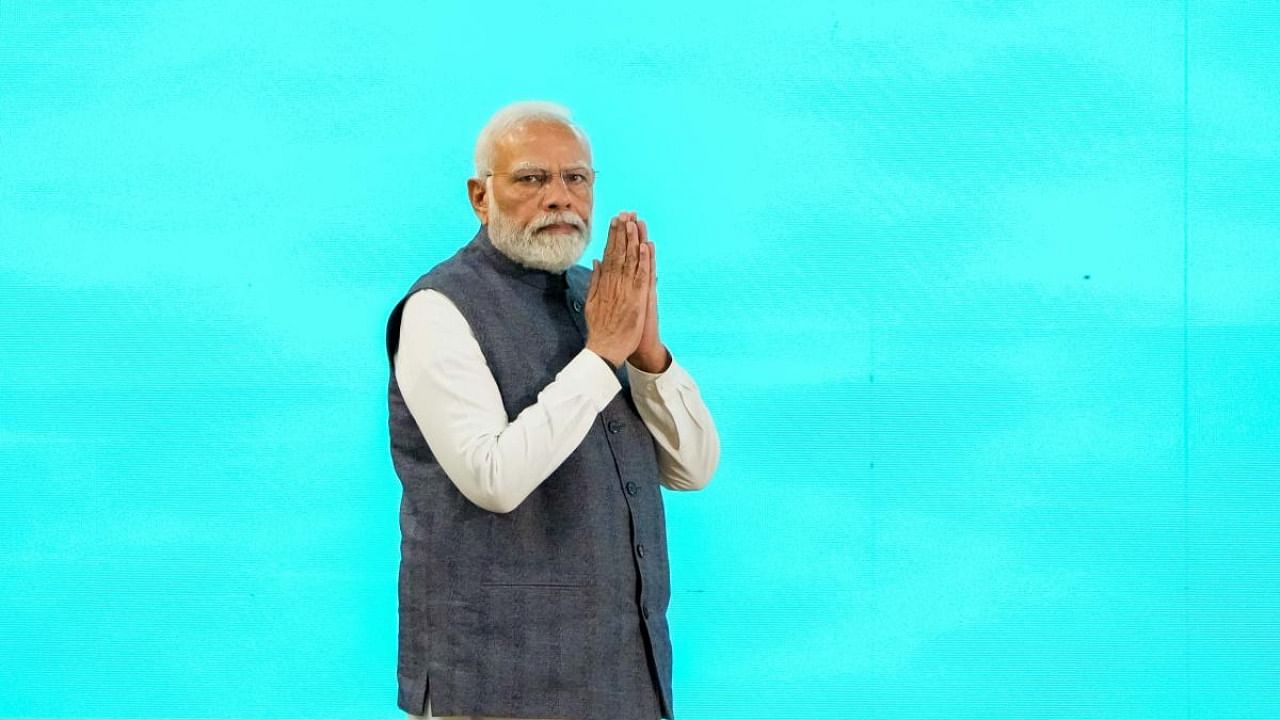
By Mihir Sharma
To economic policy makers in the rest of the world, the annual presentation of India’s Union Budget must be a mystifying exercise. It’s less a statement of accounts than a state of the union address, laying out government priorities for the year ahead. Media coverage is carnivalesque: This year, for some reason, one prominent channel sat its anchors and experts at a news desk suspended from a crane 20 stories high.
What must be even more confounding is how Indian leaders appear able to get away with Budget math other politicians cannot, whether economically or politically. That says something important about the moment India is in right now — and raises questions about whether its leaders are making the right choices.
This new Budget, for example, proposes to cut taxes for the rich as well as the poor. Bringing relief to the lower end of the income spectrum makes perfect political sense at a time when inflation is surging and an election is due in 2024. Yet somehow Finance Minister Nirmala Sitharaman was also able to slash the top effective rate of income tax below 40 per cent and still describe her budget as one for the “middle class.”
Even more surprisingly, she was able to increase infrastructure and welfare spending without, on paper, blowing a hole in the fiscal deficit. How was that miracle achieved? By deftly using inflation, for one. The Budget could present various spending heads as growing smartly when they are in fact barely keeping up with inflation. In addition, the government was able to save money by quietly withdrawing its pandemic-relief free food scheme at the beginning of this year.
Prime Minister Narendra Modi is largely unchallenged politically — and this grants Sitharaman and other officials a remarkable ability to manage the narrative around taxes, spending, inflation, and debt. Unlike in the US, Modi’s government doesn’t need to negotiate with the opposition about the size of debt, which remains at 5.9 per cent of gross domestic product in the coming year, compared to 4.6 per cent prior to the pandemic. It faces no strikes brought on by rising inflation, as in the UK. The political effectiveness of Modi’s party machine means that he largely has a free hand economically.
Also Read — The impact of the new tax regime on savings
India also genuinely has a lot going for it. Public debt isn’t too high. Entitlements are not yet a burden on the exchequer. Voters are largely willing to accept what leaders suggest is necessary in terms of economic policy. This is the sort of moment that comes rarely in a nation’s history, when circumstances align in its favour.
The question is whether India is making the best use of this moment. Modi obviously thinks he knows what the priority should be. For three years in succession, amid the stresses of the pandemic, his government has increased public spending on physical infrastructure — roads, ports, railways. This year, India’s state-run railways will receive investment funding from the Union Budget almost equivalent to what it takes in as revenue. Altogether, in the three years since the pandemic hit, public investment in infrastructure has been raised to 3.3 per cent of GDP.
Maybe that is the right focus. Economists have long bemoaned the poor state of India’s connectivity and argued it is a major reason for the country’s inability to develop an export-focused manufacturing sector.
I am not so sure that is still true, however. It may have been the case 10 years ago. Today, India’s leaders must also be open to the possibility that the constraint on India’s future growth will be its human capital — the education, skills, and health of its young population.
These “softer” priorities do not get the budgetary treatment that “hard” infrastructure does. Money continues to be spent on efforts such as the digitalisation of public education, of course. But, compared to the plans for India’s infrastructure rollout, there is simply less effort being put into equipping India’s growing workforce with the basics that it needs.
Focusing on basic literacy and numeracy is the first step. Large-scale survey data has found that three-fourths of students in the seventh grade can’t do simple subtraction, and one-third can’t read at a second-grade level. Even so, less has been put aside in this budget for the National Education Mission than was in the last one.
Transforming India into a globally competitive economy may certainly be the government’s aim. It has the political capital and the economic space to pursue more than one way of achieving that. Better connectivity isn’t the only thing India needs. It could be using the free hand it enjoys to give its workforce a leg up.